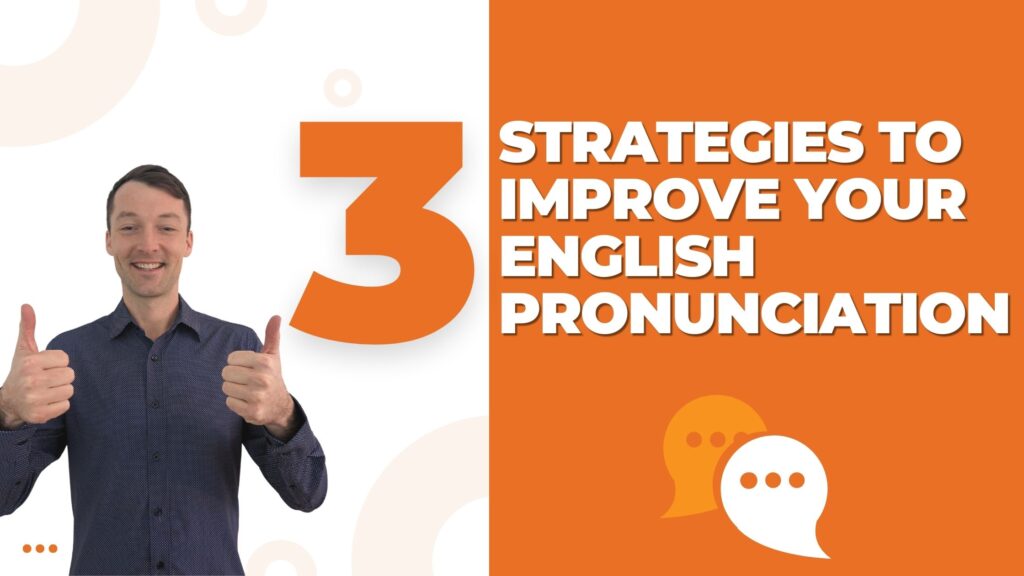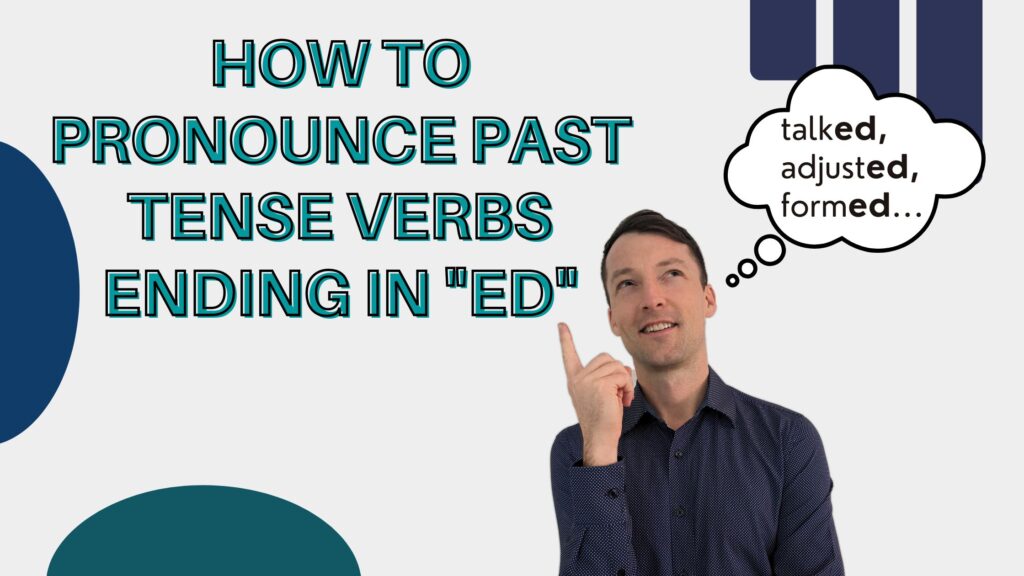The past tense in English for regular verbs is easy to form. You probably already know that you usually add “ed” to the base form of the verb. But you may wonder how to pronounce the “ed” ending in the past tense in English.
Subscribe to our YouTube Channel to see all of our lessons and get the latest videos right away!
Today I talk about the past tense in English for regular verbs. I talk about how to form it and how to use it. Finally, I talk about the three ways of pronouncing the”ed” ending. It can be pronounced as:
I also give you some ways of knowing which pronunciation of the “ed” ending you should use. There are links to click on so that you can here these endings pronounced correctly. At the end there will be a sheet to download so you can practice these pronunciations.
When we use the past tense in English.
We use the past tense to discuss actions that happened in the past and are now finished. Look for signal words such as yesterday, last, and ago.
I talked to my brother yesterday.
My neighbor moved to California last year.
I worked in a hospital two years ago.
How to Form the Past Tense in English for Regular Verbs.
Most verbs in English are regular. To form the past tense for these verbs, we usually simple add “ed.”
Every day I call my sister. Last year I called my sister.
On Mondays you call your sister. Yesterday you called your sister.
He/She/It often calls his sister. Two days ago he called his sister.
Every week we call our sister. Last week we called our sister.
Every morning they call their sister. They called their sister two months ago.
If a verb already ends with a silent “e”, simply add the letter “d” to form the past tense.
I dance every week. Last year I danced in a musical.
If a verb ends with a consonant plus “y,” change the “y” to ”i” and add the letters “ed”
I often worry about my kids. Last year I worried about my kids.
How to pronounce the “ed” ending in the past tense in English–the three ways.
- /id/ The sound /id/ adds an extra syllable to the verb. If a verb ends with the /t/ or /d/ sound, you pronounce “ed” ending /id/. For example,
- /t/ The sound /t/ does not add an extra syllable to the verb. We use it for verbs that end in the following sounds: /k/, /s/ /sh/, /ch/, /f/, /p/ and /x/
- My mother cooked
 dinner”. We pronounce “cooked” as “cookt“.
dinner”. We pronounce “cooked” as “cookt“. - I dressed
 in my best clothes. The pronunciation “dressed” is “dresst“.
in my best clothes. The pronunciation “dressed” is “dresst“. - They pushed
 the door open. We say “pushed as “pusht“.
the door open. We say “pushed as “pusht“. - She watched
 TV last night. We pronounce “watched as “watcht“.
TV last night. We pronounce “watched as “watcht“. - The children laughed
 at the silly puppy. We pronounce “laughed” as “laught“.
at the silly puppy. We pronounce “laughed” as “laught“. - The child’s balloon popped
 . The pronunciation of “popped as “poppt“.
. The pronunciation of “popped as “poppt“. - The mechanic fixed
 my car. We pronounce “fixed” as “fixt.”
my car. We pronounce “fixed” as “fixt.”
- My mother cooked
Sometimes people who are learning English will say, ” My mother cook-id dinner,” but now you know that is incorrect.
- /d/ For English verbs ending in any other sound, the “ed” ending is pronounced /d/. It does not add an extra syllable to the verb.
- I entered
 the room. We pronounce”entered” as ” enterd.”
the room. We pronounce”entered” as ” enterd.” - She traveled
 to Mexico. You should say “traveled” as “traveld“.
to Mexico. You should say “traveled” as “traveld“. - The dog belonged
 to my uncle. We pronounce “belonged” is as “belongd.”
to my uncle. We pronounce “belonged” is as “belongd.” - I arranged
 for him to stay in a hotel. The pronunciation of “arranged” is “arrangd.”
for him to stay in a hotel. The pronunciation of “arranged” is “arrangd.” - We played
 soccer in the park on Sunday afternoon. We pronounce “played” as “playd.”
soccer in the park on Sunday afternoon. We pronounce “played” as “playd.”
- I entered
As with the verbs which take the /t/ sound, we never say, ” I play-id soccer in the park. That is incorrect English.
If you are ever unsure of which sound to use with the past tense in English, here is a little trick.
Gently put your hand on your Adam’s apple, the hard bone in the middle of your neck. Say the sound /t/. Then say the sound /d/. You should feel nothing when you say one sound, and some tickling or vibrations when you say the other.
Which sound vibrates?
- If you said /d/, you are correct. The sound /d/ is called a voiced sound because you use your vocal cords to say it.
- The sound /t/ is unvoiced, because your vocal cords are not used.
- When you are not sure what sound to give the ”ed” ending, pronounce the verb in the present tense with your hand over your Adam’s apple. Pay attention to the last sound. If you feel vibrations, it is a voiced sound and it takes the sound /d/ ( The verbs ending in /d/ are exceptions. They take the sound /id/).
- If you feel no vibrations, it is an unvoiced sound and takes /t/ (Of course verbs ending with /t/ are exceptions. They also take /id/).
Now you know how to form the past tense in English and how to pronounce the “ed” endings. In many languages, what you see and what you say are usually the same. You probably already know that in English, what you see and what you say may be different. You always see “ed” at the end of a regular verb in the past tense, but you say either /t, /d/, or /id/. Now you know the rules. You can download a practice sheet to help you practice these sounds in the past tense in English.
Idioms of the day
- to bite the bullet–to spend more money than you can really afford because you have no choice. My car is broken and they can’t fix it. I have to bite the bullet and buy a new one.
- on the fence–undecided about an important decision–I haven’t decided yet whom to vote for. I guess I’m on the fence for now.
In the next posting I talk about and area that gives many English language learners trouble, subject-verb agreement in the third person singular.






Pingback: The Present Perfect Tense--Connecting the Past with the Present
Pingback: Phrasal Verbs--Understanding and Using Two Word Verbs